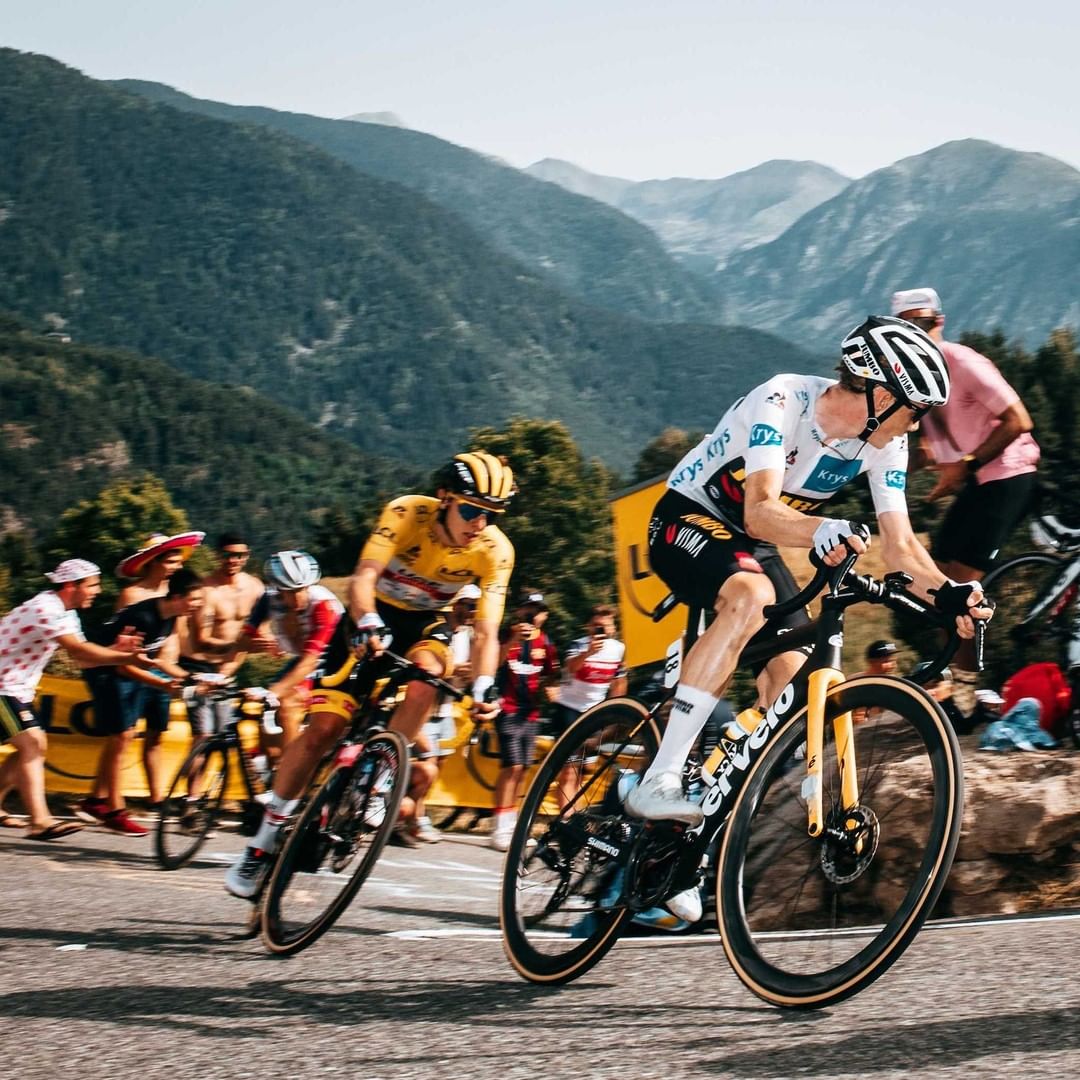
“The Tour de France on water” — What can stand up paddling learn from the world’s biggest race?
“Remove from the heat, crumble in the cheese and stir until melted. Add the thyme then transfer to a large bowl. Allow to cool a little, and then stir in the egg yolks and season.”
I was listening to a recipe for blue cheese soufflé with pommes frites, and I was also watching a climactic stage of the biggest race in the world. Bizarrely, this odd combination made perfect sense. Even more bizarre, I could see the future of stand up paddling coming to a boil as the Eurosport commentator ran through his daily recipe during stage 17 of this year’s Tour de France.
For much of July, I sat transfixed watching 192 cyclists attempt an incredible sporting challenge that when mixed with entertaining and insightful commentary becomes a delicious meal and elevates a long, boring race format into a must-watch live event.
On the surface, “Le Tour” should be a cure for insomnia: 21 days, 3500 kilometres and 100 hours of racing with little more than 300 minutes of consequential action. Several stages are so uneventful that every rider is given the same time. In other words, there are days when quite literally nothing happens on the leaderboard. And yet, it’s unmissable.
The reasons why are many but suffice to say: The slow-paced world of stand up paddle racing could learn a lot from the annual pilgrimage through the Alps and Pyrenees.
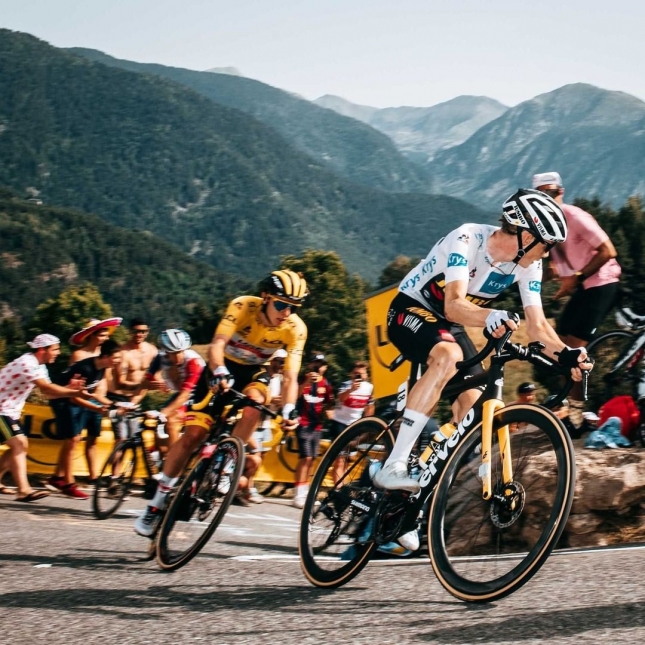
The Tour de France is arguably the biggest race in the world (credit: @letourdefrance)
I believe the Tour de France is so special because it’s not a race, it’s a story. A story filled with extraordinary characters – both the cyclists themselves and the surrounding landscape – that stitch together to create a masterful mosaic told through brilliant live broadcasts.
Tour winners (and valiant losers) become generational heroes, while the mountain peaks that largely shape the GC (“General Classification,” the overall results) have become towering icons. The Tourmalet, Alp d’Huez and Mont Ventoux are as synonymous with cycling as Molokai, Doheny and Hood River are to SUP.
For the uninitiated: The Tour de France is the world’s most-watched annual sporting event (and third behind only the Summer Olympics and soccer World Cup). It’s a stage race, meaning a big group of riders (the “peloton”) depart with a mass start each morning, race around 200km per day for 21 days (or “stages”) with overall times determining the final winner (along with various other prizes such as best sprinter and best climber).
If you’ve never watched a full stage of the Tour it’s hard to describe what makes it so compelling. The format produces so many heroes and villains that fill the pages of the race in a free-wheeling script full of drama and intrigue.
We have the overall contenders chasing the ultimate victory, but that’s almost too obvious of a storyline. I’m more interested in the specialist climbers who light up the mountain stages, or perhaps the loyal “domestiques” who sacrifice themselves for their team captains, or even the dedicated directeurs sportif that try to manage the nine-man team from the car.
The breakaways, the attacks, the drops. The hills, the valleys and mountaintops. The hype, the history and helicopter images of horticultural hillsides topped with historic castles. Mix it all together and we suddenly move beyond the realm of mere “race” and into an immersive world of sporting adventure. And guiding us through that world are an expert team of commentators that provide the ballast of the live broadcasts.
There’s the play-by-play action as the gritty stars slowly ascend the 15%-gradients of the murderous mountain stages. There’s the cat-and-mouse tactics as the sprinters attempt to bag a flat-day win. There’s the dark horse attackers that try to steal a stage with a long-range roll of the dice. And there are the teams, each trying to fulfill their own strategic objectives that intertwine with rivals like a game of Snakes & Ladders.
And when there’s not much happening on the road (which is most of the time) then throw in some aerial images of that postcard-perfect village down the road, tell us a story of the surrounding countryside, give us some insights, highlights, throwbacks and chit chat among an assembled commentary team that produces its own cult heroes (somewhere, someone is building a statue of Sean Kelly).
There’s even time each day for a regional French recipe.
A typical Tour de France broadcast is equal parts race, travel guide, history lesson and podcast. It’s soothingly insightful, unpretentiously authoritative and frighteningly addictive. The commentators and camera crew make you feel like you’re right there in France even if you’re watching at 2am in Australia.
To borrow a phrase, it’s “More than a race.”
And as I started questioning my own sanity for investing so much time in a sport I don’t even practice, it suddenly dawned on me that stand up paddling could borrow just about everything from the Tour (sans doping). And at a fraction of the cost.
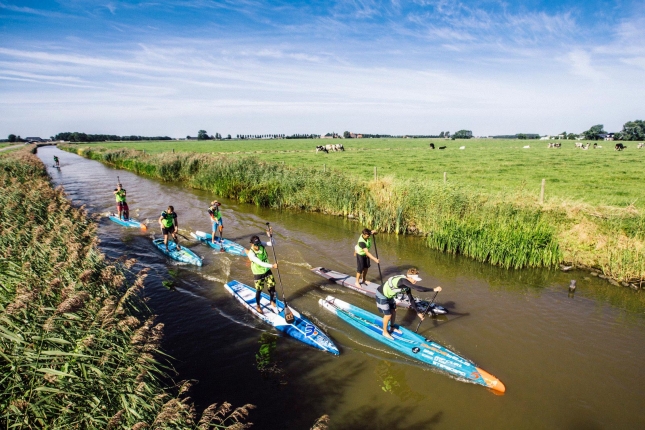
Just like the peletons and breakaways of the Tour de France, the SUP11-City Tour is a story told through draft trains (photo: @ydwer)
Now, we could have a philosophical debate about the importance of viewership, sponsorship and whether a sport really needs fans to justify its existence, but I’m sure we can all agree that stand up paddling could benefit from a wider audience in general. Thirteen years after the Battle of the Paddle (BOP) kickstarted SUP racing, athletes, events, media and brands still struggle for viability in a sport that has rarely strayed beyond its tribal origins. Stand up paddling will always have a healthy core of raw participation alone, but “a race is only as good as its coverage” often rings true as well.
One of the obvious issues with SUP is that it’s so slow. It’s not Formula 1 and never will be. “Boring” would be a polite description by the average sports fan watching from afar. Surf racing was long considered the x-factor that could deliver our sport a bigger stage, but that’s popcorn at best. BOP racing is a short-lived Instagram highlights reel without a real story (and nobody has managed to broadcast it well since the Doheny days anyway).
But we don’t need speed. We don’t need “action” every second of a race. It’s worth noting that the best parts of the Tour – the mountaintop finishes – happen at the slowest speeds.
Rather, I believe stand up paddling is the type of sport that needs an emotional connection with its audience, one that not only engages fans (and potentially, sponsors) but inspires new paddlers to get on the water. Arguably the most effective way to create an emotional connection is to tell a story–and when a race lasts five or six hours a day, there’s plenty of time for talking.
You can probably guess where I’m going with this: I’ve already described my love of the “ultras” and the authentic, human stories they produce–stories that I believe could bridge the divide between us tribal paddlers and the wider world. But I’ve always considered those stories to be something written well after the final finisher limps across the line. What if, though… what if we could also broadcast these ultras live in a way that not only entertains but engages, inspires and helps grow the sport of stand up paddling for everyone?
What if we could create the Tour de France on water?
It’s not as crazy as it sounds. Fortunately, we already have the races: The SUP11-City Tour in the Netherlands being the obvious one. Not only one of the longest SUP races in the world but also one of the longest-running, the 11 Cities — founded in 2009 — mirrors the Tour de France format in many ways. It’s a stage race (five days) with long days (five hours plus) and even comes with the individual time trials that help wedge gaps in the leaderboard that would otherwise be dictated by the draft trains (this feature was actually added a few years ago via direct inspiration from the Tour de France).
The 11 Cities even has those quaint little villages that would make the perfect interlude during a marathon broadcast.
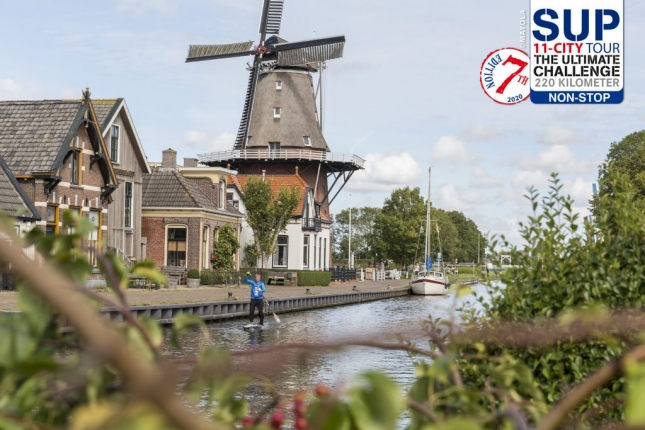
The SUP11-City Tour winds its way through the quaint countryside of Fryslân province (photo: Mayola Dijksman)
(The only thing missing, format wise, is the teams element that is so central to the Tour de France, something I believe the wider sport of SUP should be embracing. What’s the point of Starboard, NSP, etc having so many top paddlers if they never work together? I think we need to move beyond SUP racing only being an individual sport, but that’s a debate for another day.)
As a huge bonus, the 11 Cities also has arguably the best media setup in the sport. Around 75 volunteers help make this race happen each year including a dozen dedicated to photo and video. It’s an incredible achievement for such a humble race–the 11 Cities out-produces events that have far bigger budgets and much more hype.
So the logical next step for the SUP11-City Tour is to add a live broadcast of the race alongside the daily live highlights shows we added a few years ago (“The Evening Stage”). Logistically, it won’t happen this year, but I’m all-in for testing it out in 2022 and I know the organisers are as well.
It’s not just the 11 Cities, either. We’ve got dozens of contenders for these long, slow, story-based races. The Dordogne Integrale in France, the two Yukon ultra ultras in Canada, the Great Glen in Scotland (got history?) and one of the newer names in the ultra-marathon world, the Clarence 100 in Australia.
The great thing is, because SUP is primarily a participation-based sport, we don’t even need live broadcasts to embrace these ultras. They already exist as an extraordinary challenge–the ultras will always be for the paddlers first, fans second, though it would be a great bonus to deliver it live as well.
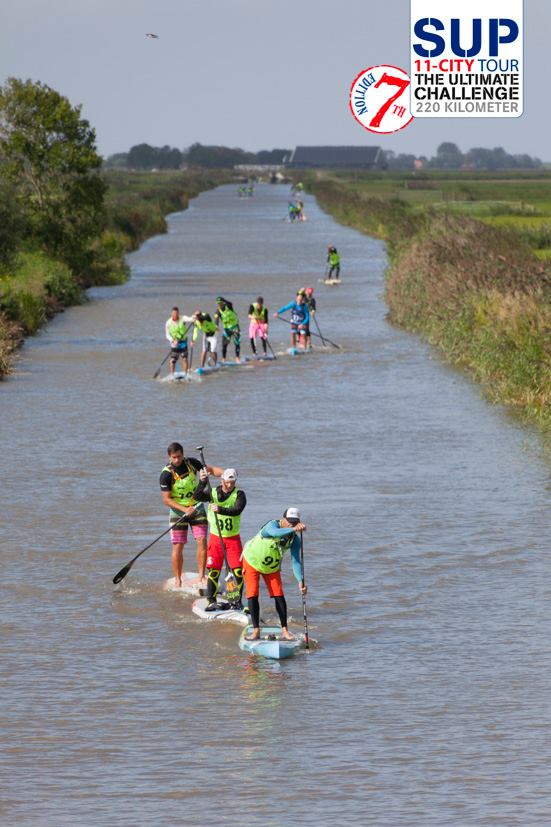
When you’re dropped from the bunch on one of the endless canals, it’s just as hard to fight back as on the Alp d’Huez
I’m particularly excited about the Clarence 100, not only as it’s in my own backyard but because the format (three-day stage race) and accessible broadcast location give it Tour de France style potential. If we can get 100+ weekend warriors and a dozen recognised athletes on the start line, it’s going to create a compelling contest and help build a grand event downunder.
(Which further highlights the beauty of SUP: unlike the elite-only world of pro cycling, SUP racing is still just as accessible for pro athletes as it is the everyday paddler.)
While the “ultras” would be the most obvious way to recreate the Tour de France on water, any SUP race could learn a thing or two from the Le Tour. Even a 20km race on a lake in Europe is going to last for two hours, which is more than enough time to tell a few stories and highlight the surrounding area. It’s also plenty of time to play with new formats. There are many great types of SUP racing just like there are many formats in cycling, but I find it intriguing that what sounds like the most boring cycle race in the world is actually the most watched, most interesting and arguably the most inspiring.
It would be easy for the cynic to dismiss all these comparisons by pointing to the Tour de France’s hundred-million dollar media budget. But Facebook Live is free, and $500 phone cameras can beam HD images better than million-dollar TV cameras could just a few decades ago. We still need a solid budget to pull it all together, but it shouldn’t be out of reach at this point in our sport.
Or perhaps you could argue that cycling has a long, rich history, one that SUP would take many decades to replicate. I agree that history is hugely important, especially when telling the “story” of a race, but there’s no shortage in our sport if we get a little creative. Sure, the SUP racing itself is no more than 10-15 years old, but stand up paddling has historical connections spanning centuries: Molokai-2-Oahu retraces the routes of Hawaiian kings. The 11-City Tour is directly based upon a 120-year old ice-skating race that literally stops the nation whenever it’s held. The Yukon ultras pay homage to indigenous cultures and pioneering trading routes from hundreds of years earlier.
Our sport may look boring to outsiders, but I think it’s a fascinating world. It’s up to us to bring others into that world, immerse and inspire them to join our tribe as it expands into a nation. But whether you agree with this logic or not, hopefully you’ll acknowledge it’s simply a good time to try new things in our sport. Because if can’t hit the reset button and move our sport forward after a global pandemic, when are we going to do it?
These ultras are only one part of a wider paddling world, but I think they’re a part of our sport we should be spending more time promoting and developing. That’s why I’m committed to helping create the Tour de France on water, building out the Ultra Paddle League in 2022 and adding elements of that most famous race in France into all the SUP races I cover in the future. I want to see others commit to it as well: I want to see more of the top athletes trying their hand at the challenge of an ultra, more weekend warriors focusing on regional events like the Clarence 100, more brands promoting the most challenging side of the sport, and more media telling more stories.
If we zoom out and step back, SUP is still a young sport, and we still have a largely blank canvas upon which to create. We’ve still got plenty of time and freedom to grow.
And either way, who doesn’t love a nice bowl of pommes frites?



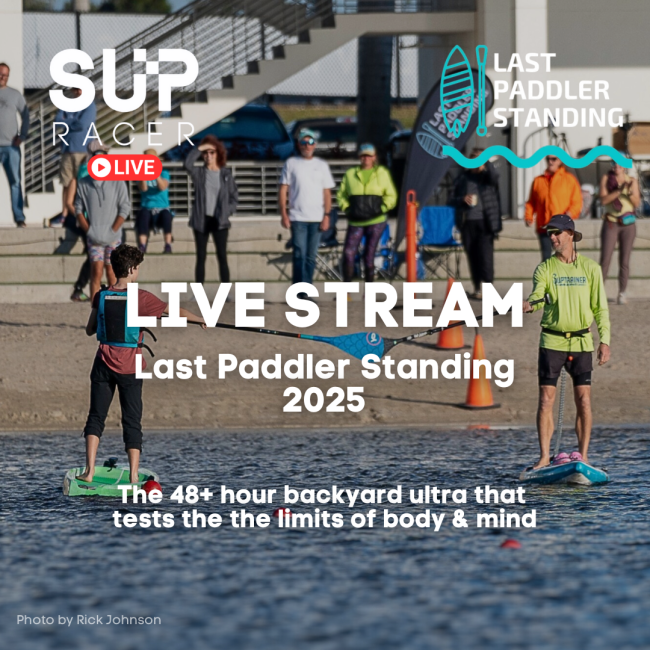
You must be logged in to post a comment.